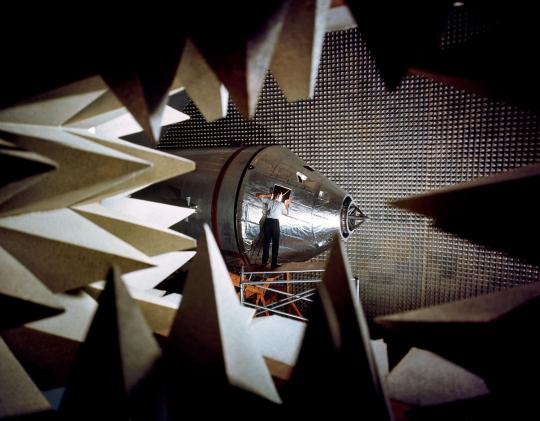
In celebration of the 50th anniversary of Apollo 11, we’ll be sharing answers to some frequently asked questions about the first time humans voyaged to the Moon. Answers have been compiled from archivists in the NASA History Office.
How many people worked on the Apollo program?

At the height of Apollo in 1965, about 409,900 people worked on some aspect of the program, but that number doesn’t capture it all.
It doesn’t represent the people who worked on mission concepts or spacecraft design, such as the engineers who did the wind tunnel testing of the Apollo Command Module and then moved on to other projects. The number also doesn’t represent the NASA astronauts, mission controllers, remote communications personnel, etc. who would have transferred to the Apollo program only after the end of Gemini program (1966-1967). There were still others who worked on the program only part-time or served on temporary committees. In the image above are three technicians studying an Apollo 14 Moon rock in the Lunar Receiving Laboratory at Johnson Space Center. From left to right, they are Linda Tyler, Nancy Trent and Sandra Richards.
How many people have walked on the Moon so far?
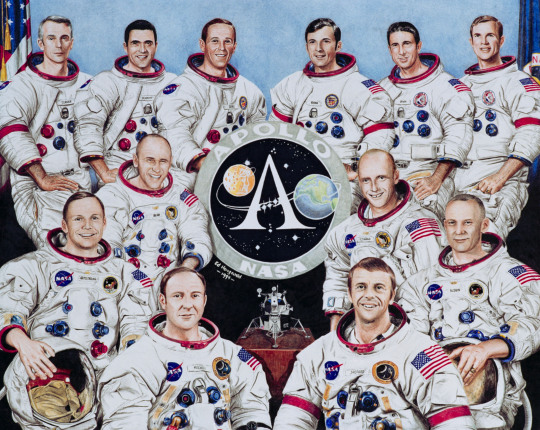
This artwork portrait done by spaceflight historian Ed Hengeveld depicts the 12 people who have walked on the Moon so far. In all, 24 people have flown to the Moon and three of them, John Young, Jim Lovell and Gene Cernan, have made the journey twice.
But these numbers will increase.
Are the U.S. flags that were planted on the Moon still standing?
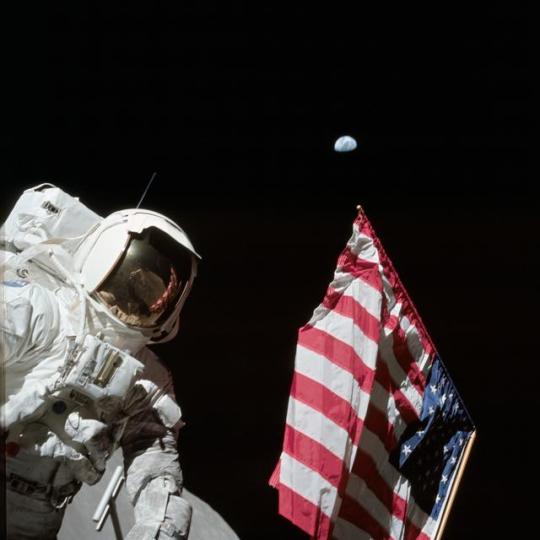
Every successful Apollo lunar landing mission left a flag on the Moon but we don’t know yet whether all are
still standing. Some flags were set up very close to the Lunar Module and were
in the blast radius of its ascent engine, so it’s possible that some of them could have been knocked down. Neil Armstrong and Buzz Aldrin both reported that the flag had been knocked down following their ascent.

Our Lunar Reconnaissance Orbiter took photographs of all the Apollo lunar landing sites. In the case of the Apollo 17 site, you can see the shadow of the upright flag.
But why does it look like it’s waving?
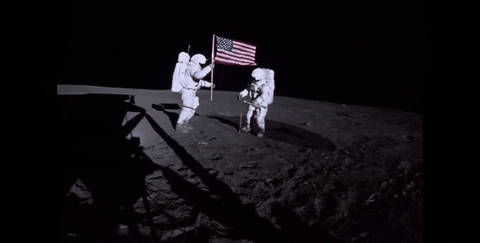
The flags appear to “wave” or “flap” but actually they’re swinging. Swinging motions on Earth are dampened due to gravity and air resistance, but on the Moon any swinging motion can continue for much longer. Once the flags settled (and were clear of the ascent stage exhaust), they remained still.
And how is the flag hanging? Before launching, workers on the ground had attached a horizontal rod to the top of each flag for support, allowing it to be visible in pictures and television broadcasts to the American public. Armstrong and Aldrin did not fully extend the rod once they were on the Moon, giving the flag a ripple effect. The other astronauts liked the ripple effect so much that they also did not completely extend the rod.
Why don’t we see stars in any of the pictures?
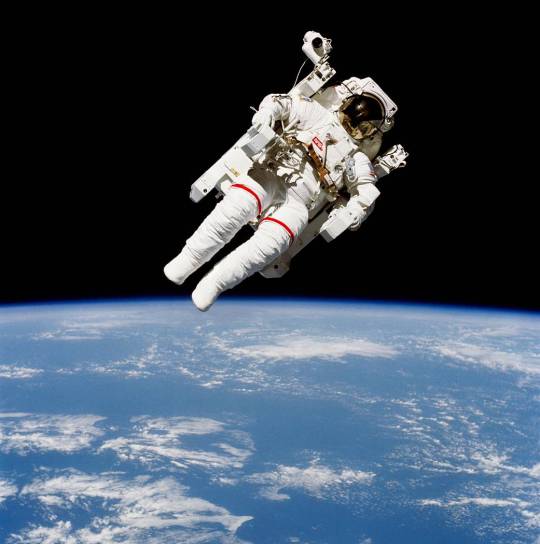
Have you ever taken a photo of the night sky with your phone or camera? You likely won’t see any stars because chances are your camera’s settings are set to short exposure time only lets it quickly take in the light off the bright objects closest to you. It’s the same reason you generally don’t see stars in spacewalk pictures from the International Space Station. There’s no use for longer exposure times to get an image like this one of Bruce McCandless in 1984 as seen Space Shuttle Challenger (STS-41B).
The Hasselblad cameras that Apollo astronauts flew with were almost always set to short exposure times. And why didn’t the astronauts photograph the stars? Well, they were busy exploring the Moon!
When are we going back to the Moon?

The first giant leap was only the beginning. Work is under way to send the first woman and the next man to the Moon in five years. As we prepare to launch the next era of exploration, the new Artemis program is the first step in humanity’s presence on the the Moon and beyond.
Keep checking back for more answers to Apollo FAQs.
Make sure to follow us on Tumblr for your regular dose of space: http://nasa.tumblr.com.




Комментариев нет:
Отправить комментарий